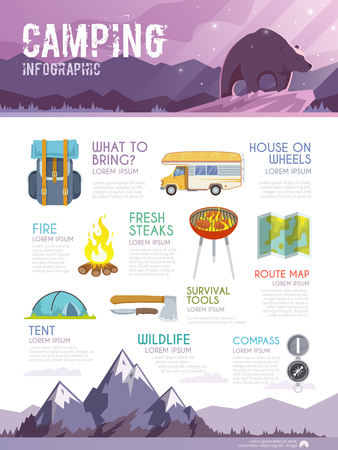Wintertime camping is an enjoyable and adventurous experience, yet it requires correct gear to guarantee you stay cozy. You'll need a close-fitting base layer to catch your body heat, along with a protecting jacket and a water resistant shell.
You'll additionally require snow risks (or deadman supports) buried in the snow. These can be tied using Bob's clever knot or a regular taut-line drawback.
Pitch Your Outdoor tents
Winter months outdoor camping can be an enjoyable and adventurous experience. However, it is important to have the proper equipment and recognize exactly how to pitch your camping tent in snow. This will prevent cold injuries like frostbite and hypothermia. It is additionally crucial to eat well and stay hydrated.
When setting up camp, see to it to select a website that is sheltered from the wind and free of avalanche threat. It is likewise a great idea to load down the location around your camping tent, as this will help in reducing sinking from temperature.
Before you set up your outdoor tents, dig pits with the exact same size as each of the anchor factors (groundsheet rings and person lines) in the center of the outdoor tents. Load these pits with sand, stones or even things sacks full of snow to compact and safeguard the ground. You might also want to take into consideration a dead-man anchor, which involves linking camping tent lines to sticks of wood that are hidden in the snow.
Pack Down the Area Around Your Outdoor tents
Although not a requirement in most locations, snow stakes (also called deadman supports) are an outstanding addition to your outdoor tents pitching set when outdoor camping in deep or pressed snow. They are basically sticks that are made to be buried in the snow, where they will ice up and create a solid anchor factor. For finest results, utilize a clover hitch knot on the top of the stick and hide it in a few inches of snow or sand.
Establish Your Camping tent
If you're camping in snow, it is a good concept to use an outdoor tents developed for winter months backpacking. 3-season camping tents work great ventilation if you are making camp below tree zone and not expecting particularly severe climate, but 4-season outdoors tents have stronger posts and fabrics and supply even more protection from wind and hefty snowfall.
Be sure to bring appropriate insulation for your sleeping bag and a cozy, dry blow up mat to sleep on. Blow up mats are much warmer than foam and assistance prevent chilly spots in your camping tent. You can also include an extra mat for sitting or food preparation.
It's additionally a great idea to set up your outdoor tents near an all-natural wind block, such as a group of trees. This will make your camp more comfy. If you can't find a windbreak, you can develop your very own by digging openings and hiding objects, such as rocks, outdoor tents risks, or "dead man" anchors (old outdoor tents person lines) with a shovel.
Tie Down Your Camping tent
Snow stakes aren't necessary if you make use of the ideal methods to anchor your outdoor tents. Hidden sticks (perhaps collected on your strategy hike) and ski posts function well, as does some version of a "deadman" hidden in the snow. (The concept is to create a support that is so strong you will not be able to draw it up, despite a lot of initiative.) Some makers make specialized dead-man anchors, yet I choose the simpleness of a taut-line hitch tied to a stick and afterwards hidden in the snow.
Be aware of the surface around your camp, particularly if there is avalanche threat. A branch that falls on your camping tent could harm it or, at worst, hurt you. Additionally be wary of pitching your outdoor tents on a slope, which can catch wind and cause collapse. A sheltered location with a low ridge or hillside is much better than a high gully.
